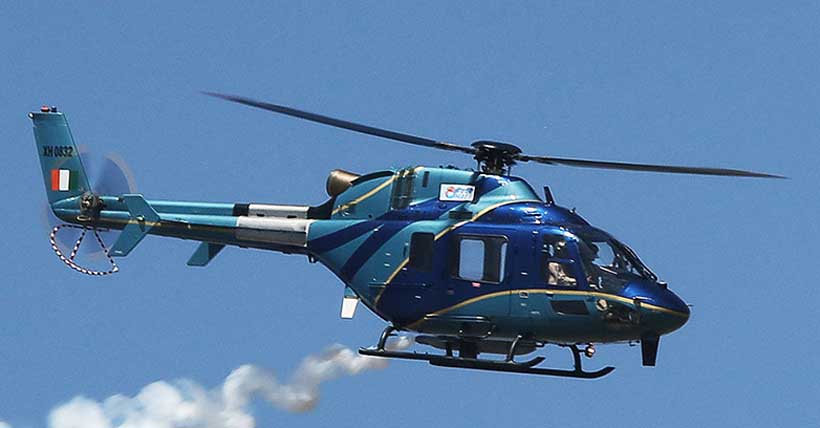In the unforgiving terrain of Ladakh, where sub-zero temperatures and thin air challenge even the toughest soldiers, helicopters are not just assets—they are lifelines. Whether evacuating an injured soldier from the Siachen Glacier, coordinating artillery fire in Rajasthan’s deserts, or providing critical intelligence in the dense jungles of Arunachal Pradesh, the Indian Army’s rotary-wing fleet has long been indispensable to national security.
Yet, despite its importance, this fleet is steadily becoming outdated. The Cheetah and Chetak helicopters, inducted in the 1970s, have become increasingly difficult to maintain and operate. Once military aviation workhorses, their single-engine design poses potential risks in high-altitude missions, and their avionics are relics of a bygone era. With China and Pakistan modernising their battlefield air support systems, the Indian Army must ensure its rotary-wing assets keep pace with evolving operational demands.
Now, with a renewed push toward modernisation, the Indian Army is on the cusp of transformation. This effort is not only about acquiring new helicopters but also about integrating battlefield aviation into Army-led operations, reducing bureaucratic delays, and ensuring that helicopters remain under the command of those who need them most—the ground forces.
The Growing Role of Helicopters in Land Warfare
Modern battlefields are no longer determined by sheer manpower or massed mechanised forces alone. Instead, manoeuvrability, real-time intelligence, and rapid response times dictate success. Helicopters provide all three. Unlike fixed-wing aircraft operating from distant air bases, helicopters remain embedded within ground formations, offering close air support, battlefield mobility, and reconnaissance capabilities critical to modern land warfare.
For the Army, helicopters serve as essential reconnaissance assets, spotting and directing artillery fire to improve accuracy in deep-strike engagements. In high-intensity battle scenarios, they provide immediate and tactical casualty evacuation (CASEVAC), ensuring that wounded soldiers receive critical medical treatment within the golden hour, often making the difference between life and death.
Their role in supporting armoured thrusts into enemy-held territory is equally significant, offering real-time aerial cover to mechanised columns as they manoeuvre through hostile terrain. Helicopters also enhance battlefield intelligence by working in conjunction with drones and satellite imagery, creating a layered surveillance network that allows for pinpoint strikes and real-time situational awareness.
More than just aerial platforms, helicopters are integral to modern land warfare, seamlessly connecting intelligence, mobility, and firepower.
The Indigenous Shift: Modernising Army Aviation
Recognising the need for self-reliance in military aviation, the Indian Army is prioritising indigenous helicopter production under the “Make in India” initiative. The Light Utility Helicopter (LUH), developed by Hindustan Aeronautics Limited (HAL), is at the heart of this modernisation push.
The LUH is set to replace the ageing Cheetah and Chetak helicopters, offering superior capabilities designed specifically for India’s diverse terrain. Optimised for high-altitude operations in Ladakh, Siachen, and Arunachal Pradesh, it features advanced avionics, improved endurance, and greater payload capacity. Night-flying capabilities enhance the Army’s ability to conduct 24/7 operations in challenging environments.
Beyond reconnaissance and transport helicopters, the Army is also expanding its attack helicopter fleet. It has already inducted the Prachand, India’s first indigenous light combat helicopter, built to operate in extreme high-altitude conditions. The Rudra, a weaponised version of the Advanced Light Helicopter (ALH), provides firepower support to ground forces, while the ALH Mk-III adds another layer of capability for multi-role missions, including troop transport and reconnaissance.
While indigenous production remains a priority, the Army is also evaluating foreign options to bridge the gap during the transition. Among the contenders are the Kamov-226T, a modular reconnaissance helicopter initially part of an Indo-Russian joint production agreement, and the Airbus H125, a globally recognised high-altitude helicopter with advanced avionics. These additions could complement India’s domestic manufacturing push, ensuring operational readiness while long-term indigenous production scales up.
With this modernisation plan, the Army is ensuring that its aviation assets are capable, independent and fully integrated with its ground operations.
The Army’s Demand for Full Control Over Battlefield Helicopters
Army Aviation doctrine will likely see a major structural shift in the near future, exercising control over helicopter assets. While the Army has long operated reconnaissance and utility helicopters, Medium Lift Helicopters (MLH) and select Attack Helicopters (AH) have historically been under Indian Air Force (IAF) control. Based on a 1986 agreement, this division was made when battlefield requirements differed from today’s fast-evolving operational landscape.
In 2012, the Government of India (GoI) transferred ownership of all attack helicopters to the Army, acknowledging the need for closer coordination between ground forces and aerial firepower. However, MLHs like the Mi-17 and Chinook remain under IAF control, leading to operational delays in battlefield deployments.
The Army argues that helicopters must be integral to its combined arms teams rather than borrowed assets from another service. The time-sensitive nature of combat does not allow for multiple layers of command approvals. When an opportunity target presents itself, commanders must be able to immediately deploy attack and transport helicopters rather than wait for clearance.
With growing threats on both the Northern and Western fronts and the increasing importance of integrated warfare, transferring full ownership of all battlefield helicopters to the Army is no longer just an administrative decision—it is an operational necessity.
Global Precedents: Why India Must Follow Suit
Major military powers have already resolved inter-service conflicts over helicopter ownership, recognising that rotary-wing assets belong under land forces, not air forces.
The United States Army fought a similar battle to control its rotary-wing fleet, ultimately securing full ownership through the Johnson-McConnell Agreement of 1966. France took a similar approach, transferring all helicopters to the Army while the Air Force retained fixed-wing aircraft. Meanwhile, adversaries like China and Pakistan already operate fully integrated combat aviation units under their respective ground forces. To remain operationally competitive, India must adopt a similar model by fully integrating helicopters into Army operations.
A Future-Ready Army Aviation Corps
The Indian Army’s helicopter modernisation plan is not just about acquiring new aircraft—it is about fundamentally restructuring how airpower is used in land warfare. By inducting new helicopters, expanding indigenous manufacturing, and securing full ownership of battlefield aviation assets, the Army is ensuring that its forces are fully prepared for future conflicts.
The transition will require significant investment in training, infrastructure, and logistics, but it is a necessary step toward a more agile and autonomous force. As India moves toward self-reliance in defence, the skies over Ladakh, Arunachal, and the Western front will likely soon be filled with a new generation of Army-controlled helicopters—faster, more capable, and fully integrated into ground operations.
For a nation facing threats on multiple fronts, ensuring the Army has complete control over its aerial assets is not just a strategic advantage but an operational necessity. The future of India’s battlefield dominance will be decided not just on the ground, but also in the skies—and the Indian Army is ready to take command.







